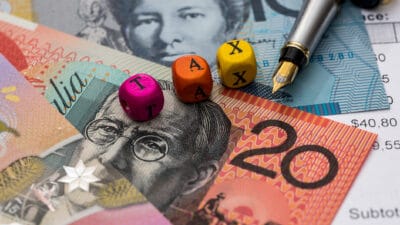Passive income from ASX shares can be a great way to build up a second income and eventually achieve financial independence from relying on the work paycheque.
According to the Australian Bureau of Statistics (ABS), the average weekly total earnings for an Australian employee translates into annualised earnings of around $75,000. To receive that level of annual dividends, we're talking about building up a large portfolio value.
To get a satisfactory wealth level, I'd want to build up investments that can achieve good underlying growth themselves.
How I'd build towards $75,000 of annual passive income
Unless someone wins the lottery or inherits significant wealth, it will take time, patience and a lot of compounding to grow to $75,000 of investment income.
Therefore, I'd suggest focusing on businesses that are investing in their operations to ensure they are supporting their own dividend and earnings growth.
If a business is paying out all of its profit each year (with a 100% dividend payout ratio), it's unlikely the profit will grow much if it's not reinvesting for more growth. For example, an 8% dividend yield could remain at that level forever, whereas other businesses deliver impressive long-term growth.
I'd want to invest in those growing investments, even if the upfront dividend yield isn't that high. The yield-on-cost in the future could grow substantially.
For example, the investment conglomerate Washington H. Soul Pattinson and Co. Ltd (ASX: SOL) is a century-old company that is steadily adding to its growing portfolio of business holdings. The ASX share has grown its annual ordinary dividend every year since 2000. In FY13, it paid an annual dividend of 46 cents per share, and in FY23, it paid an annual dividend of 87 cents – an increase of 89% over a decade. That's the type of investment, in my opinion, that can result in significant organic growth of my portfolio's value and dividends.
Globally focused exchange-traded funds (ETFs) could also be excellent long-term investments to help build a portfolio value up towards the required wealth to make $75,000 of annual passive income. I'd be thinking about quality global ETFs like Betashares Global Quality Leaders ETF (ASX: QLTY), VanEck MSCI International Quality ETF (ASX: QUAL), or Vanguard MSCI Index International Shares ETF (ASX: VGS). Reinvesting dividends can help with compounding.
If someone were able to invest an average of $1,500 per month and the portfolio generated an average return of 10% per year over 25 years, it would reach $1.77 million at the end of that 25-year period. Someone who is 25 could reach that figure by 50.
Choose the right dividend yield from ASX shares
Someone with a portfolio value of $1.77 million would need a dividend yield of approximately 4.25% to make $75,000 of annual dividends.
In my opinion, it's important to choose investments that can continue to deliver growth over our lifetimes. Our portfolios may need to last many decades, and inflation means the required amount of dividends is probably going to keep rising to keep up with rising costs.
Once I reach a portfolio value that could generate a yearly income of $75,000, my strategy would be to choose investments that provide a decent yield but still deliver underlying growth.
Washington H. Soul Pattinson, Wesfarmers Ltd (ASX: WES) and Brickworks Limited (ASX: BKW) are ASX shares that may offer that mix of yield and long-term compounding.
I don't know what the ASX will look like in 25 years, but at the moment, real estate investment trusts (REITs) like Rural Funds Group (ASX: RFF), Charter Hall Long WALE REIT (ASX: CLW) and Centuria Industrial REIT (ASX: CIP) all have appealing starting distribution yields and are seeing underlying rental income growth.
Or, another strategy to generate passive income could be to stick with the sort of global ETFs I mentioned before, like the QUAL ETF, and just sell 4.25% of the ETF's value each year and unlock cash flow that way. Hopefully, the ETF's long-term capital growth could outperform 4.25% per year, and investors could see both wealth growth and good cash flow.









